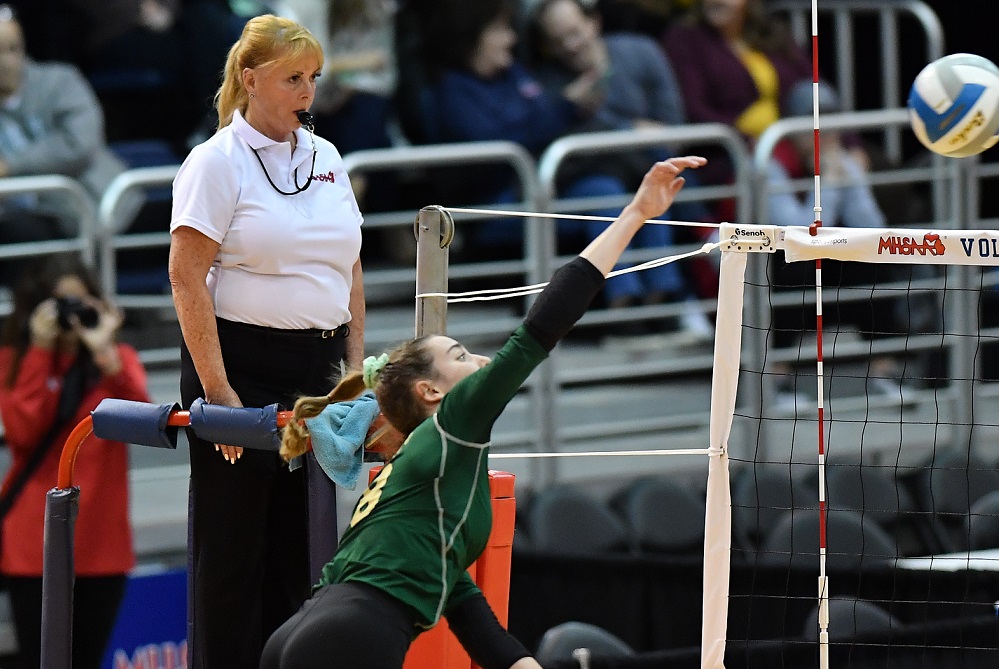
Be the Referee: Volleyball Obstruction
By
Brent Rice
MHSAA Assistant Director
September 23, 2021
Be The Referee is a series of short messages designed to help educate people on the rules of different sports, to help them better understand the art of officiating, and to recruit officials.
Below is this week's segment – Volleyball Obstruction - Listen
Ever wonder why in volleyball some balls hit into obstructions remain in play, while others are replayed, and some end the rally?
If a ball hits an obstruction over a playable area during a rally, and then is played by the same team, it has the same status as any other hit. However, that isn’t the case in all other instances.
If the ball hitting the wall or an object attached flush to the wall doesn’t actually interfere with a player’s legitimate effort to play the ball, the ball is dead and a loss of rally and point shall be awarded. If it does interfere with the playing of the ball, a replay is declared if the wall is less than six feet from the boundary.
If the ball hits a suspended backboard over the playable area, a replay will be declared as long as the referee believes the ball would have remained in play. Serves that hit any obstruction are a loss of rally and point.
Previous editions
Sept. 16: Catch or No Catch - Listen
Sept. 9: Intentional Grounding – Listen
Sept. 2: Pass Interference – Listen
Aug. 26: Protocols and Mechanics – Listen
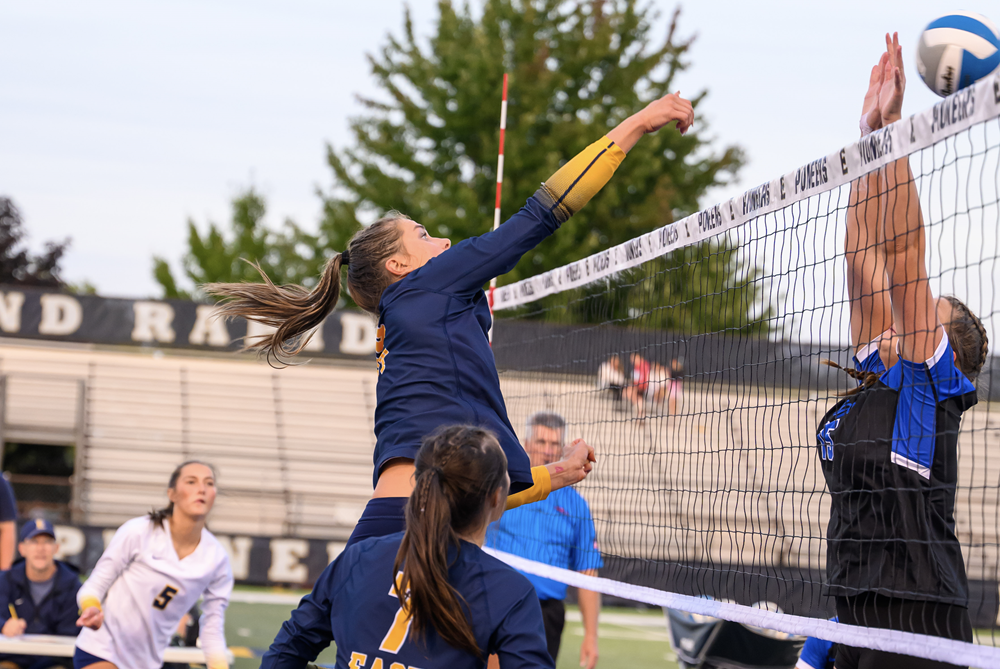
EGR, Hopkins Take Volleyball Match to Football Field for 'Rally on Reeds'
By
Dean Holzwarth
Special for MHSAA.com
August 28, 2024
EAST GRAND RAPIDS – Memorial Field in late August is typically filled with the sounds of football pads smashing against each other and raucous crowds celebrating touchdowns.
 Last week, however, a different environment engulfed East Grand Rapids’ football field.
Last week, however, a different environment engulfed East Grand Rapids’ football field.
With picturesque Reeds Lake as the backdrop, an outdoor volleyball match between the Pioneers and visiting Hopkins was played on the 50-yard line.
The first-year event was dubbed “Rally on Reeds,” and it turned out to be a special gathering of the East Grand Rapids community.
“It was electric,” first-year Pioneers coach Bruce Hungerford said. “Like a ruckus football game meets a minor league baseball-type environment. It was very cool."
More than 2,000 people attended the match, which ended with EGR sweeping the Vikings 3-0.
It was a spectacle that included a carnival area, a visit from members of the Grand Rapids Rise professional volleyball team, a band and the opportunity to showcase the sport of high school volleyball in a non-traditional setting.
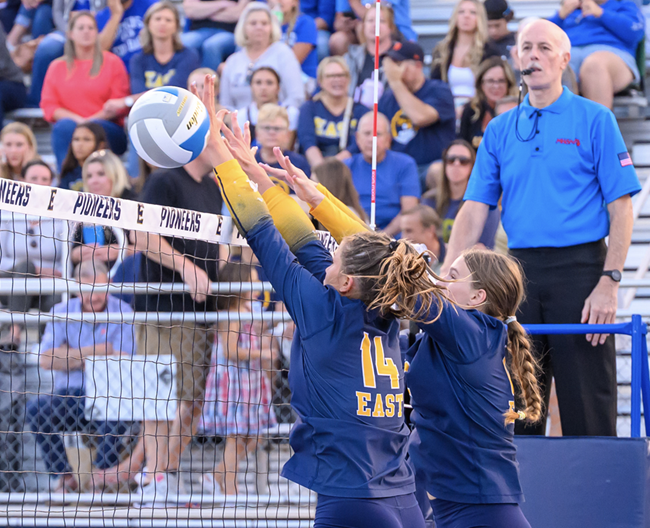 “It was unreal,” EGR junior captain Sadie Devlaeminck said. “It was just so great to see how much the community showed up for the volleyball team and to see the environment that we played in. It was just crazy.”
“It was unreal,” EGR junior captain Sadie Devlaeminck said. “It was just so great to see how much the community showed up for the volleyball team and to see the environment that we played in. It was just crazy.”
Hungerford had an idea for an event like this before being hired for the job. He was eager to implement it.
“I had it in my plan to build a community, and host a lot of home games,” Hungerford said. “EGR has an awesome football setup because there’s no track around the football field and it just sits perfectly.
“I had the idea well before the Nebraska (volleyball) game (last season) and mostly because of Grand Haven. They do the Battle of the Boardwalk, so I knew people did it outside for scrimmages and games. With this being my first game coaching, I thought this would be a cool way to try and get these little kids that I’ve coached to come and see it, and it went from there.”
Nearby Aquinas College rented EGR the court, and the nets and stanchions were supplied by Grand Rapids Community College.
While excitement built, the process of putting together the court on the football field proved to be a challenging and time-consuming task.
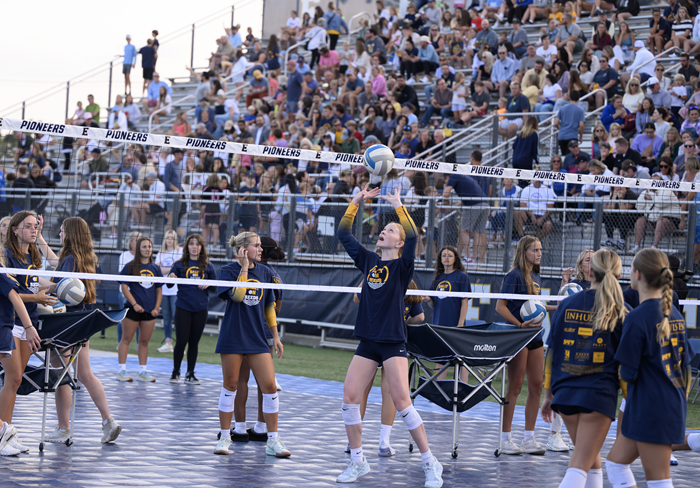 It took more than seven hours for the court to be constructed with the finishing touches completed at 6:48 p.m., 12 minutes before the start of the match.
It took more than seven hours for the court to be constructed with the finishing touches completed at 6:48 p.m., 12 minutes before the start of the match.
“The turf provided a tougher environment because of the squares, and you can’t just slide them in,” Hungerford said. “We had to restart a few times and I thought we were absolutely dead in the water at one point. But we got the lines down, and it wasn’t going anywhere.”
While anxiety surrounded the installation of the court, that was eased when play started.
“I was a little nervous because the court took so long to set up,” Devlaeminck said. “And I thought it was going to be harder than indoors because of all the different elements like the wind. But I knew it was going to be a lot of fun playing with my team in a football stadium.
“It was nice for the football team to come and sit in the student section and show support and cheer us on. I thought it was great.”
Hungerford said the Hopkins’ players and coaches enjoyed it as well.
“I didn’t want them to think that they were coming to our prom,” he said. “We were in constant contact with them, and their principal participated in the dunk tank. We got one of their kids to be interviewed by the media, and it was a fun community connection. They all loved it, and they said it was super cool. They were glad they came.”
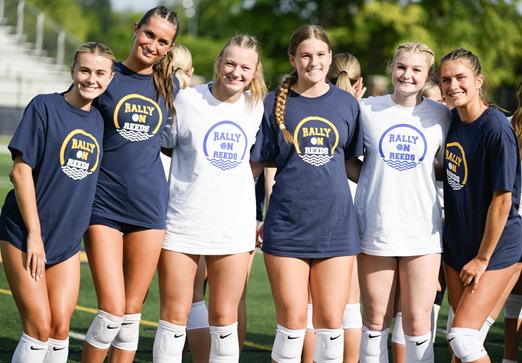 Sophomore Kenzee Stanley-Eldred was overwhelmed by the amount of support the Pioneers received.
Sophomore Kenzee Stanley-Eldred was overwhelmed by the amount of support the Pioneers received.
“We weren’t used to playing in front of very big crowds and don't usually have much of a student section, but a lot of people from our school came for this,” Stanley-Eldred said. “And also just the environment of playing outside on a sport court instead of being in a gym. Being outside feels a lot different.”
Organizers hope to make it an annual event by having different teams each year play against EGR.
For many in attendance, this was their first glimpse of high school volleyball.
“A lot of people that I knew and I talked to after the game said it was the first time ever having anything to do with the sport, so it was really cool that we let them into that,” Stanley-Eldred said. “I think it had a big impact with just how many people showed up and were willing to support one another, especially when it was doing something so new and different.”
 Dean Holzwarth has covered primarily high school sports for Grand Rapids-based WOOD-TV for five years after serving at the Grand Rapids Press and MLive for 16 years along with shorter stints at the Ionia Sentinel and WZZM. Contact him at [email protected] with story ideas for Allegan, Kent and Ottawa counties.
Dean Holzwarth has covered primarily high school sports for Grand Rapids-based WOOD-TV for five years after serving at the Grand Rapids Press and MLive for 16 years along with shorter stints at the Ionia Sentinel and WZZM. Contact him at [email protected] with story ideas for Allegan, Kent and Ottawa counties.
PHOTOS (Top) An East Grand Rapids hitter puts the ball past a Hopkins block during last week’s “Rally on Reeds” game one EGR’s football field. (2) A pair of Pioneers work to get their hands on a kill attempt. (3) East Grand Rapids warms up as fans fill the stands. (4) East Grand Rapids and Hopkins players take a photo together wearing their “Rally on Reeds” shirts. (Photos by Kathy Hoffman/Michigan Sports Photo.)

